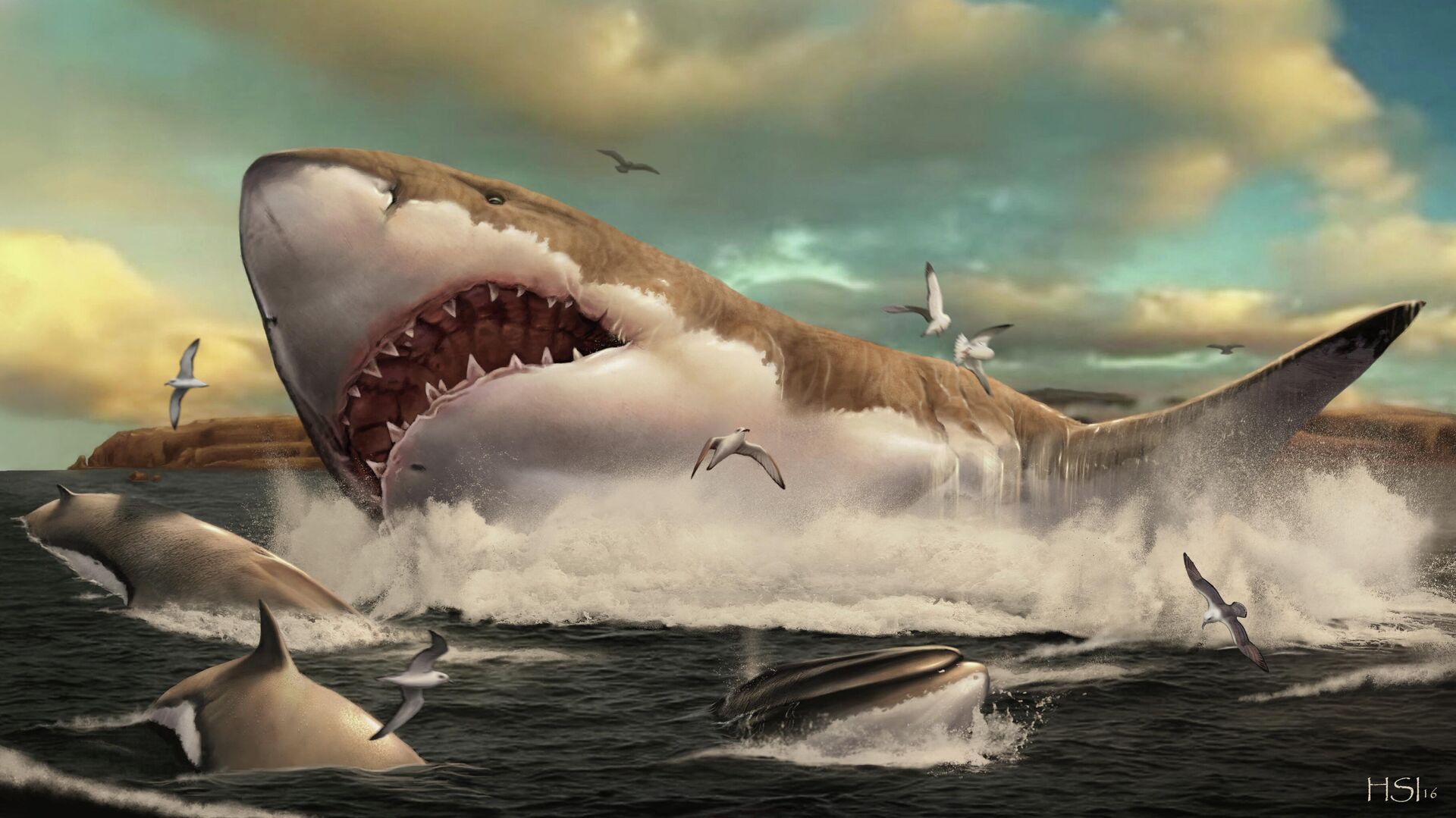https://sputnikglobe.com/20220820/megalodon-shark-could-eat-great-white-in-a-few-bites-research-claims-1099795179.html
Megalodon Shark Could Eat Great White in a Few Bites, Research Claims
Megalodon Shark Could Eat Great White in a Few Bites, Research Claims
Sputnik International
Scientists have created a 3D model of a prehistoric marine predator — the megalodon. Megalodons are extinct sharks, distinguished by their huge mass, and the... 20.08.2022, Sputnik International
2022-08-20T09:05+0000
2022-08-20T09:05+0000
2022-08-20T09:05+0000
shark
science & tech
animals
prehistoric
great white shark
https://cdn1.img.sputnikglobe.com/img/07e6/08/14/1099794644_0:0:3641:2048_1920x0_80_0_0_d95ec98515c63176497ce4d38a257e14.jpg
Scientists from the University of Zurich scanned the vertebrae and dentition of a megalodon (Otodus megalodon). The reconstructed mega-fish died at age 46, approximately 18 million years ago.It reached a length of about 16 meters and weighed more than 61 tons. According to the simulation, the maximum swimming speed reached 1.4 meters per second. The shark had to eat food with a total value of 98 thousand calories per day. Whale oil was very likely an important source of these calories. The volume of the predator's stomach could reach almost 10 thousand liters. As a result, scientists came to the conclusion that the megalodon could travel long distances and was able to eat prey the size of a modern great white shark, the biggest predator in the ocean.Megalodons that lived in the Miocene and Pliocene (23-3 million years ago) were the largest sharks that ever existed. Today, their giant teeth are often found; they're big enough to cover the palm of your hand. However, skeletons consisting of cartilage rarely fossilize, so they have not reached our days in such numbers as the teeth.
Sputnik International
feedback@sputniknews.com
+74956456601
MIA „Rossiya Segodnya“
2022
Sputnik International
feedback@sputniknews.com
+74956456601
MIA „Rossiya Segodnya“
News
en_EN
Sputnik International
feedback@sputniknews.com
+74956456601
MIA „Rossiya Segodnya“
Sputnik International
feedback@sputniknews.com
+74956456601
MIA „Rossiya Segodnya“
shark, science & tech, animals, prehistoric, great white shark
shark, science & tech, animals, prehistoric, great white shark
Megalodon Shark Could Eat Great White in a Few Bites, Research Claims
Scientists have created a 3D model of a prehistoric marine predator — the megalodon. Megalodons are extinct sharks, distinguished by their huge mass, and the strength of their bite.
Scientists from the
University of Zurich scanned the vertebrae and dentition of a megalodon (Otodus megalodon). The reconstructed mega-fish died at age 46, approximately 18 million years ago.
“It would be a superpredator just dominating its ecosystem,” co-author of the study John Hutchinson said. “There is nothing really matching it.”
It reached a length of about 16 meters and weighed more than 61 tons. According to the simulation, the maximum swimming speed reached 1.4 meters per second. The shark had to eat food with a total value of 98 thousand calories per day. Whale oil was very likely an important source of these calories.
The volume of the predator's stomach could reach almost 10 thousand liters. As a result, scientists came to the conclusion that the
megalodon could travel long distances and was able to eat prey the size of a modern great white shark, the biggest predator in the ocean.
Megalodons that lived in the Miocene and Pliocene (23-3 million years ago) were the largest sharks that ever existed. Today, their giant teeth are often found; they're big enough to cover the palm of your hand. However, skeletons consisting of cartilage rarely fossilize, so they have not reached our days in such numbers as the teeth.

